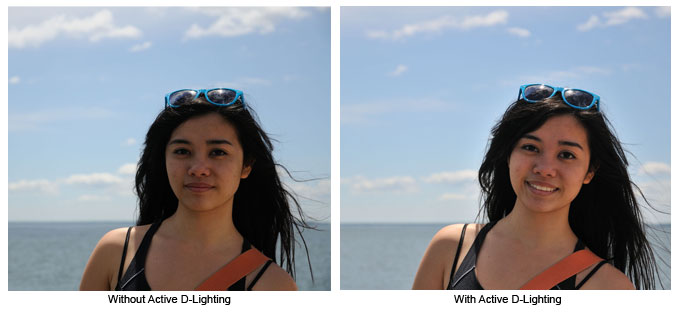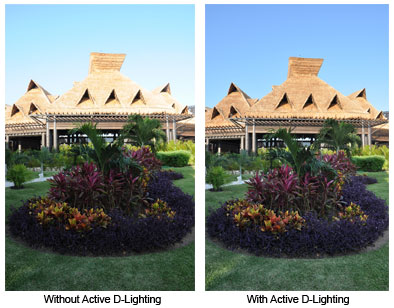Balancing Photo Exposures with Nikon's Active D-Lighting
As a Nikon senior technical manager, taking pictures is a key part of my job—and considering that I was a photojournalist before joining Nikon, it's also pretty much the best part of my job.
But being a Nikon staffer doesn't mean I don't face the same challenges you do when I set out to take pictures; actually, it means I probably face more of them, and more frequently.
An everyday example for both of us: taking a picture of someone standing in bright, overhead noonday sun. You know what happens: the shadows around the eyes (or under the brim of a hat) make it difficult to see the subject's face. There are a couple of ways to deal with this, but I'd like to share with you the one I've been using most often lately: Nikon's Active D-Lighting.
Active D-Lighting is a technology that optimizes high contrast images to restore shadow and highlight details that are often lost when strong lighting increases the contrast between bright and dark areas of the image.
With Active D-Lighting chosen on my Nikon D-SLR, the camera's Matrix meter will identify the amount of contrast in the scene and process the final picture with the appropriate amount of compensation to lighten—open up—the scene's shadows. At the same time, Active D-Lighting maintains the highlight detail—detail that other systems often ignore. It's this balance—compensating for shadows while maintaining highlights—that makes Active D-Lighting so valuable.
But there's more: an exclusive feature of Active D-Lighting is its ability to automatically readjust midtone contrast to make the overall image look more natural. It's a tremendous combination: shadows opened up (without the use of flash), highlights maintained and mid-tones adjusted for a totally natural look to the image.
Active D-Lighting's level of adjustment can be set to operate automatically or manually at four different levels (Low, Normal, High, Extra high); it's also possible to bracket pictures to get one with Active D-Lighting and one without so you can make the decision later as to which looks best to you.
Speaking of later, Nikon cameras also offer D-Lighting that can be applied to images after they have been taken by using the D-Lighting option in the camera's retouch menu. Yes, this is an after-the-fact rescue mission for poorly lit scenes, and while it doesn't offer quite the same level of fine-tuned shadow, highlight and mid-tone contrast adjustment that Active D-Lighting's real-time image optimization does, it can play a part in saving a shot we'd like to call a keeper.
Active D-Lighting takes place in the camera at the moment the photo is taken and applies digital processing only to the necessary portion(s) of the image. Even when shooting a subject with a wide dynamic range, Active D-Lighting is able to reproduce a realistic image that retains natural contrast—in other words, the picture we saw and set out to capture.









